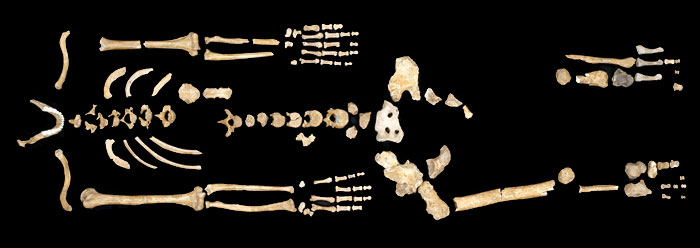The case for Neandertals as more primitive members of an evolutionary continuum that spans from apes to modern man continues to weaken. Genetic and archaeological finds are completely reshaping modern concepts of Neandertal men and women.
Researchers interested in unraveling humanity's past recently sequenced a female Neandertal's ancient DNA and published their results in Nature.1 The research included sequences that closely matched: Neandertal, Denisovan, modern man, plus an unidentified variation of man. The study authors suspected that these different groups interbred. Just as prior studies showed, this one confirmed that similarities between Neandertal and other human DNA sequences place "Miss Neandertal" inside human kind.2
In the context of biblical history, ancient families founded tribes and nations soon after their dispersal from the Tower of Babel. It appears these ancient people showed much wider variation in genetic and physical differences than the more limited range found across today's human populations.3 If accurate, then we would fully expect Neandertal peoples to have been able to interbreed with other post-Babel peoples.
Archaeology also confirms this biblical perspective. Though about 40 Neandertal graves show intentional and ritual burial rites, many scientists remain intent on defending their long-held position that Neandertals were too primitive—too ape-like—to bury their dead so reverently. They ask for more proof that the Neandertal remains had not been altered after death to merely give the appearance of non-accidental burial.
A group of mostly French researchers published in the Proceedings of the National Academy of Sciences their careful removal of sediments above and around a Neandertal skeleton from the famous La Chapelle-aux-Saints cave, clearly refuting the critics.4 The Neandertal's remains had not been tampered with since it was intentionally and ritualistically buried. This ceremony reflects the Neandertals' clear reverence and honor for the dead. Again the researchers found that Neandertals were fully human, with all the physical and spiritual dimensions of modern man. And if Neandertals were peers and relatives of modern people, then they were not our evolutionary ancestors.
In a separate systematic review of Neandertal archaeology published in PLoS ONE, a pair of researchers found that the "Neandertal archaeological record is not different enough to explain the demise in terms of inferiority in archaeologically visible domains."5 Why would Neandertal archaeology look indistinguishable from other human burials unless they were all essentially human—not in various stages of becoming human—just as biblical history would lead us to understand? Evolutionary ancestors? No, archaeology and Miss Neandertal's DNA confirm that Neandertals were our neighbors. Miss Neandertal was one of us.
References
- Prüfer, K., et al. 2014. The complete genome sequence of a Neanderthal from the Altai Mountains. Nature. 505 (7481): 43-49.
- Tomkins, J. Neandertal DNA Research Confirms Full Human Status. Creation Science Update. Posted on icr.org November 16, 2012, accessed August 8, 2014.
- Thomas, B. and F. Sherwin. Human-like Fossil Menagerie Stuns Scientists. Creation Science Update. Posted on icr.org November 8, 2013, accessed August 8, 2014.
- Rendu W., et al. 2014. Evidence supporting an intentional Neandertal burial at La Chapelle-aux-Saints. Proceedings of the National Academy of Sciences. 111(1): 81-86.
- Villa, P., and W. Roebroeks. 2014. Neandertal Demise: An Archaeological Analysis of the Modern Human Superiority Complex. PLoS ONE. 9 (4): e96424.
* Mr. Thomas is Science Writer at the Institute for Creation Research.
Image credit: Collections Ville de Périgueux, Musée d'Art et d'Archéologie du Périgord: Inv. 85.3. Adapted for use in accordance with federal copyright (fair use doctrine) law. Usage by ICR does not imply endorsement of copyright holders.
Article posted on August 25, 2014.




